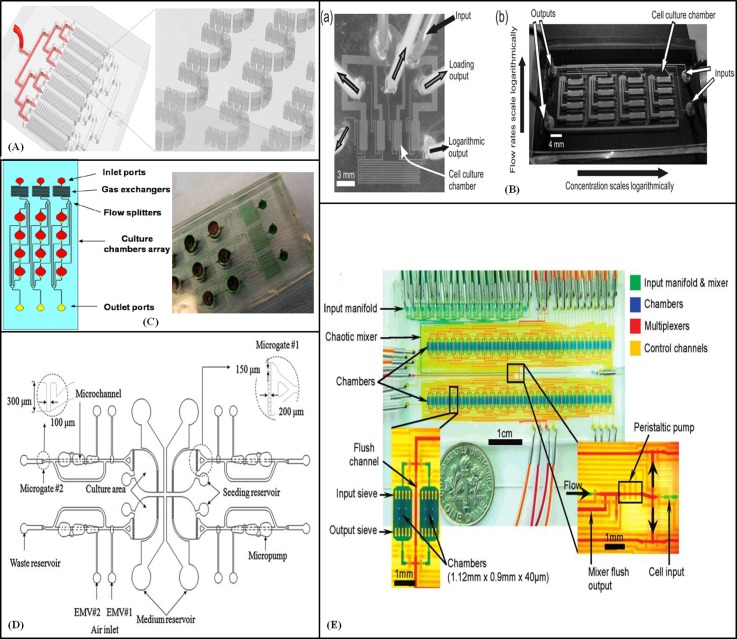Figure 3.
Cell culture for stem cell research. (A) Illustration of a microfluidic device with microtraps for the formation of embryonic bodies. Reprinted with permission from Khoury et al., Biomed. Microdevices 12, 1001–1008 (2010). Copyright 2010 Springer Science+Business Media (Figure 1). (B) Photograph of (a) 1 × 4 and (b) 4 × 4 cell culture arrays with logarithmic flow rates for perfusion. Reproduced by permission from Kim et al., Lab Chip 6, 394–406 (2006). Copyright 2006 by The Royal Society of Chemistry. (C) Micro-bioreactor array for controlling cellular environments with four equal parts. Reprinted with permission from Cimetta et al., Methods 47, 81–89 (2009). Copyright 2009 Elsevier. (D) Schematic representation of the automatic microfluidic system for the culture and differentiation of stem cells with four identical modules. Reprinted with permission from Wu et al., Biomed. Microdevices 11, 869–881 (2009). Copyright 2009 Springer Science+Business Media (Figure 1). (E) An automated cell culture chip. Reprinted with permission from Gómez-Sjöberg et al., Anal. Chem. 79, 8557–8563 (2007). Copyright 2007 American Chemical Society.

